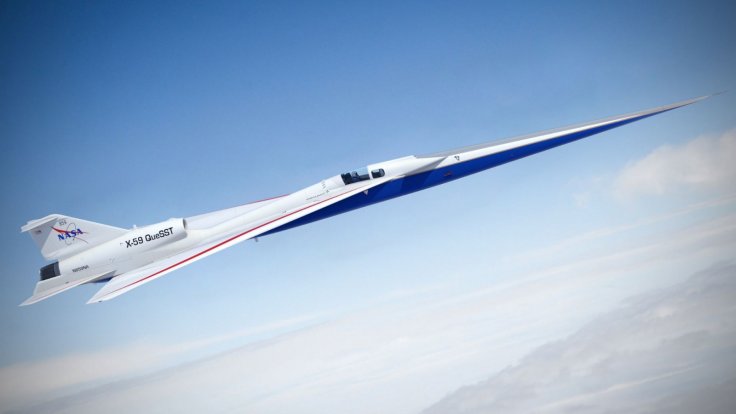In a groundbreaking moment for aeronautics, NASA proudly showcased its cutting-edge supersonic aircraft, the X-59, to the public on Friday. Nestled at a Lockheed Martin site in California, the sleek jet, spanning about 30 meters and boasting a 10-meter wingspan, marks a pivotal milestone in NASA's "Quesst" (Quiet Supersonic Technology) mission.

During a live-streamed event, NASA Manager Bob Pearce hailed the X-59 as a "30-meter leap forward on a path decade in the making, towards sustainable commercial supersonic flight." Vice-President Pam Melroy added that the aircraft is "another jewel in NASA's crown."
The X-59 is not just another high-speed marvel; it's engineered to fly without the disruptive sonic boom associated with supersonic travel. Unlike conventional supersonic flights that generate a loud bang upon breaking the sound barrier, the X-59 aims to revolutionize this experience.
When aircraft surpass the speed of sound, a sonic boom typically reverberates, causing disturbances over a certain area. Recognizing the adverse effects, the US Federal Aviation Administration (FAA) currently prohibits civil supersonic flights over the United States.
The X-59, designed to soar at an altitude of approximately 55,000 feet with a speed of 1,500 kilometers per hour, promises a different soundscape. Instead of a thunderous boom, it emits a noise comparable to the gentle closing of a car door, minimizing disturbances for both passengers and those on the ground.
Lockheed Martin, the defense contractor behind this innovative project, secured around US$250 million in funding from NASA to bring the X-59 to fruition. As the aircraft undergoes rigorous testing, the first flight trials over selected US regions are slated for later this year. These tests aim to gather crucial data, propelling NASA's mission toward a new era of quieter, more sustainable supersonic flight.









